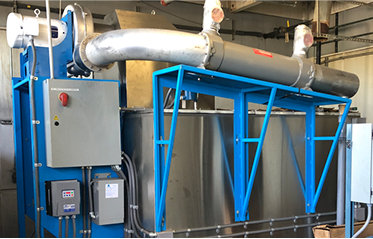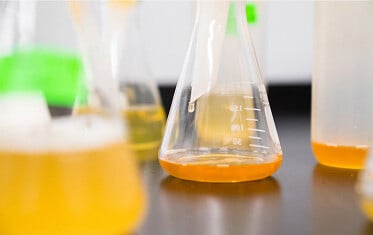
pH Adjustment & Neutralization
- Home
- »
- Products
- »
- Water & Wastewater Treatment Solution
- »
- pH Adjustment
What is pH Adjustment?
The term "pH" (potential Hydrogen) refers to the hydrogen ion concentration in a solution, indicating how acidic or basic (alkaline) that solution is on a scale from 0 to 14. Solutions with a pH less than 7 are considered acidic, while those with a pH greater than 7 are alkaline.
pH adjustment is the process of modifying and controlling the acidity or alkalinity of a solution. This is often a required step prior to discharging treated effluent from a wastewater treatment process to the POTW. pH adjustment may also be implemented as part of or upstream of other water/wastewater treatment systems to maximize the effectiveness of those processes.
Typical Wastewater Treatment Applications for pH Adjustment Systems:
-
Simple pH Neutralization: can be used as a standalone system to neutralize pH via a chemical addition to ensure effluent discharge meets limits set by the POTW or entity receiving the treated wastewater
-
Metals Precipitation: pH adjustment can reduce the solubility of heavy metals enabling effective precipitation of the contaminants
-
Oil/Water Separation: reducing the pH of a waste stream containing oils can help break the oil/water emulsion which is necessary for effective oil/water separation via skimming and other mechanical oil/water separation processes
-
Other Applications: pH adjustment may also be used to neutralize wastewater to protect downstream equipment from corrosivity, convert hexavalent chromium to trivalent chromium, reduce foaming in downstream processes, and more
Full Range of Upgrades, Accessories and Services to Unlock Your Evaporator’s Full Potential

ENCON offers a full range of upgrades, accessories and services to minimize labor and maximize return on investment.
Recover your wastewater as clean condensate with our condenser package!
Work with our consultative Sales Engineers to spec a turn-key system.
Utilize our air permitting / permit-exemption services.
Automate with auto-dump or auto-oil-decant.
Free Application Feasibility Report
The centerpiece of our consultative approach is our complimentary bench scale analysis of your waste or process stream. This free analysis determines:
- How appropriate the stream is for evaporation
- Estimated reduction percentage
- Recommended materials of construction
- Recommended operating procedures.

Why Choose ENCON?
Superior Service & Support – We provide industry-leading technical support, ensuring customers receive prompt and knowledgeable assistance.
Consultative Sales Approach – Our expert sales engineers guide you through the process, including a detailed boil analysis of your waste stream to tailor the perfect evaporator solution.
Proven Industry Experience – With over 2,000 installations worldwide, ENCON evaporators are trusted by some of the largest companies, including 3M, GM, Ford, and Caterpillar, for their reliability and performance.
Wide Range of Heat Source Options – The most extensive selection of heat sources in the industry, ensuring the most cost-effective solution for any application.
Largest Thermal Evaporators in the Market – Designed to handle the most demanding industrial needs, with larger capacities than competitors. Proudly designed and manufactured in the USA.
Unmatched Reliability & Performance – ENCON evaporators are built for longevity, offering superior technical advantages and reliability over competitors.
